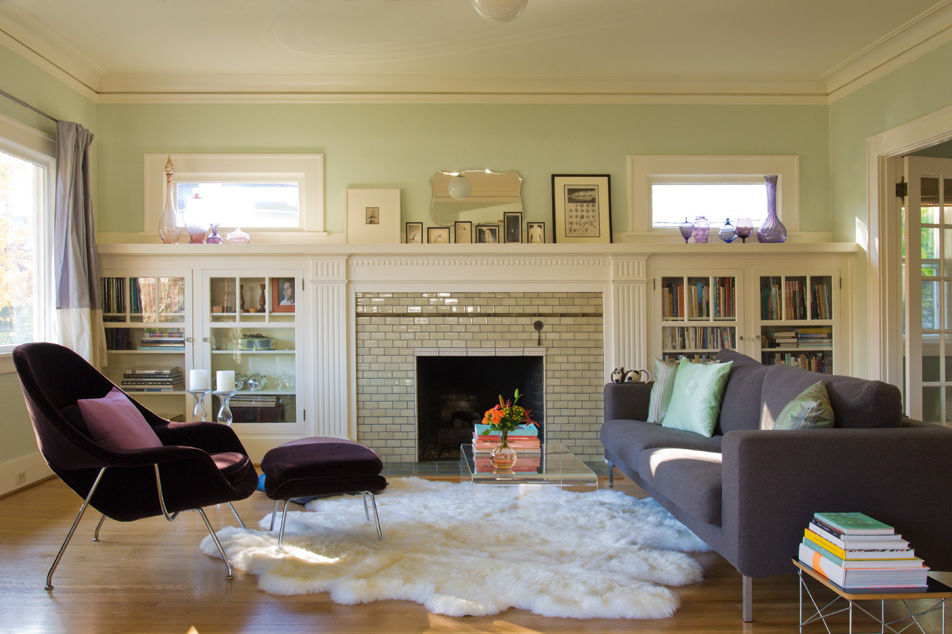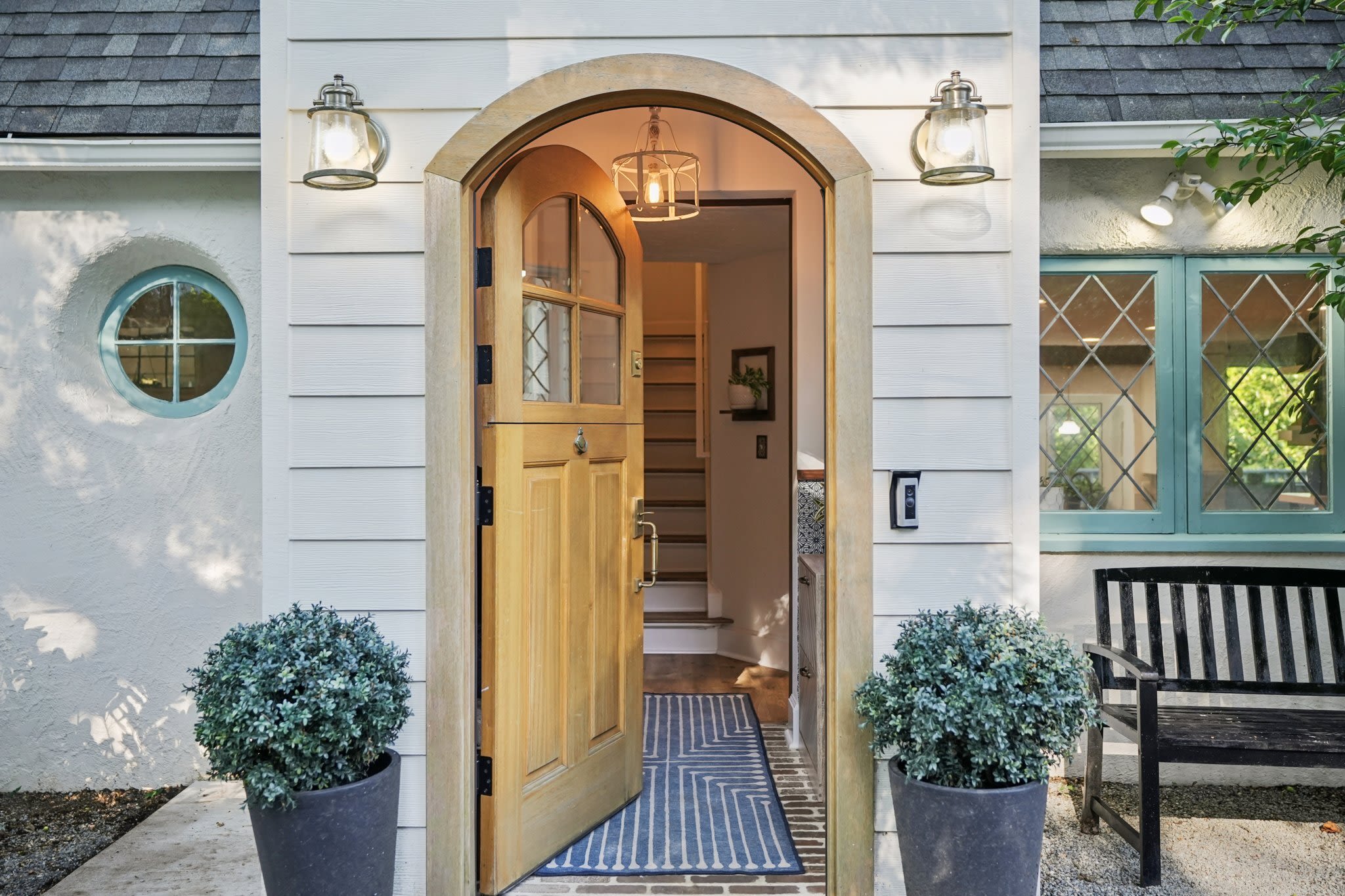Contemporary Craft
BORN IN ENGLAND in the wake of the Industrial Revolution, the Arts & Crafts movement exhorted nesters to eschew shoddy, mass-market housewares that were then pouring from factory assembly lines and to invest in homes and furnishings of beauty and quality. With its rustic architecture and Medieval-inspired décor, the movement took firm hold in Portland in the first decades of the last century, as evidenced in part by the thousands of stately Craftsman bungalows that still line our streets and continue to attract new generations of caretakers.
It was a 1923 Craftsman bungalow in Irvington that caught the eyes of 37-year-old art dealer Charles Hartman and his wife, Heather Frazier, a 47-year-old freelance designer. Having shoehorned themselves and their belongings into a tiny condominium for 12 years in San Francisco, the self-employed couple had despaired of ever getting a solid foothold in the Bay Area real estate market. Like so many who have made such calculations before, they found that their modest home-buying budget would stretch further in Portland. They made the move in 2005.
“I had been miserable in that little box, and I wanted as much of a dream house as possible,” Frazier says.
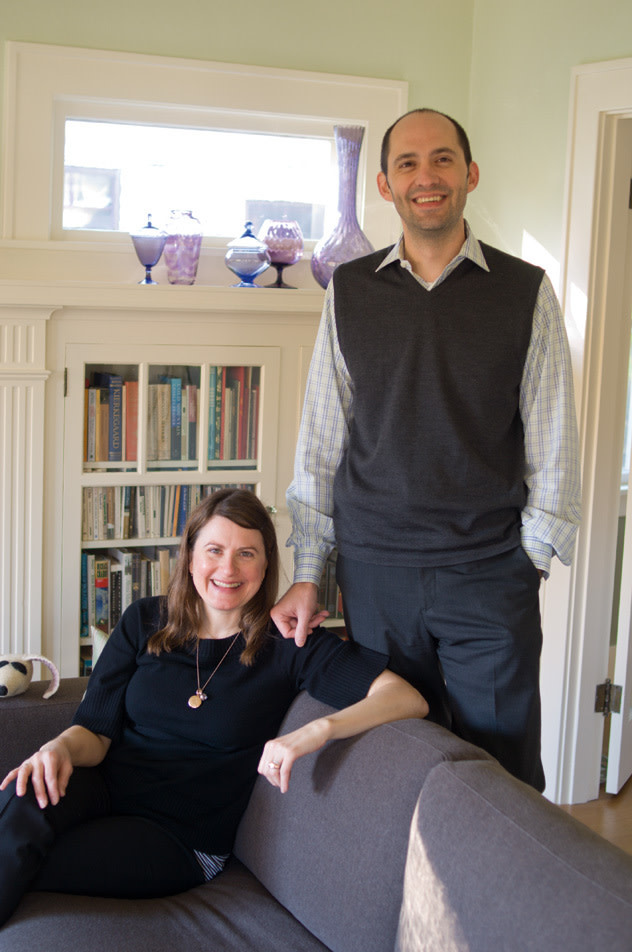
Image: Jon Jensen
Because Hartman stands at a lanky 6’4", vertical space was an essential requirement for their new home. The couple had spent two months on the hunt for a high-ceilinged Portland foursquare when they at last came across the near-perfect Craftsman: a four-bedroom, 2,300-square-foot home with nine-foot ceilings and plentiful light (also top priority for a pair making the worrisome transition to Portland’s rainy, gray weather). Moreover, three extra bedrooms, along with a main-floor sitting room, provided a place for Frazier’s college-age daughter to stay during vacations from school, as well as for Hartman’s home office and Frazier’s design studio.
Moreover, with its burly front porch and lovingly detailed built-ins, it typified the humble beauty of the Craftsman style. And it was in excellent shape, with refinished wood floors, newly tiled bathrooms and a renovated kitchen.
“Either we had to find a house that hadn’t been touched in 50 years, except for maybe a ’70s kitchen update, or one that had been through a remodel where they’d done everything fairly right—which was this house,” explains Hartman.
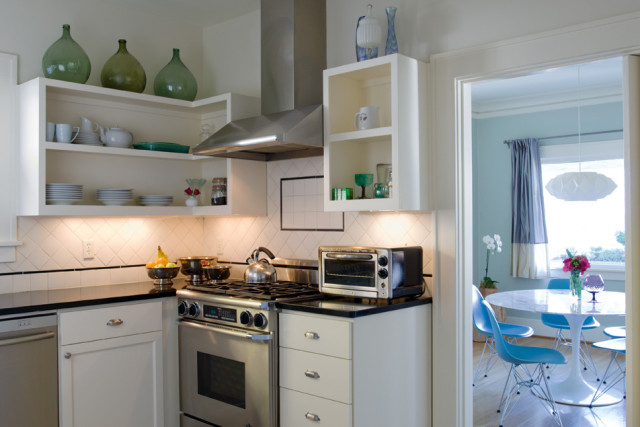
Open shelving and period-appropriate drawer fronts replace trendy cherry cabinetry, giving the kitchen a contemporary look that blends in with the home’s historic architectural style.
Image: Jon Jensen
“Fairly” was the operative word. The main sticking point was the kitchen, newly outfitted with anachronistic stainless steel appliances, cherry cabinets and stone countertops. “I’m a cook and I’m really particular about kitchens,” says Frazier. “Every kitchen we looked at had been redone with stainless steel appliances, cherry cabinets and granite countertops. The look didn’t fit in older houses.”
Still, the house had a lot going for it, and the couple took the plunge—proceeding with a modest program of penny-wise renovation and decoration that instilled a fresh, contemporary spirit of craftsmanship to the 84-year-old home. Frazier, who majored in fashion design in college and currently makes a living creating vibrantly hued paper mobiles and silk throw pillows, is a stickler about color, so the couple’s first order of business was repainting the interior walls (originally a motley assortment of hues: gray-brown, rust, yellow and mint) with sage greens, pale aquas and warm whites. Next they hired contractor Brad Creel and cabinetmaker Jim Schumont to take care of some heavier chores. Schumont built bookshelves for Hartman’s snug office, which occupies the former sitting room. Then he and Creel set about deconstructing the trendy kitchen. They replaced over-abundant storage above the kitchen countertops with a smaller complement of open shelves; beneath the counters he installed subdued, period-appropriate drawer fronts.
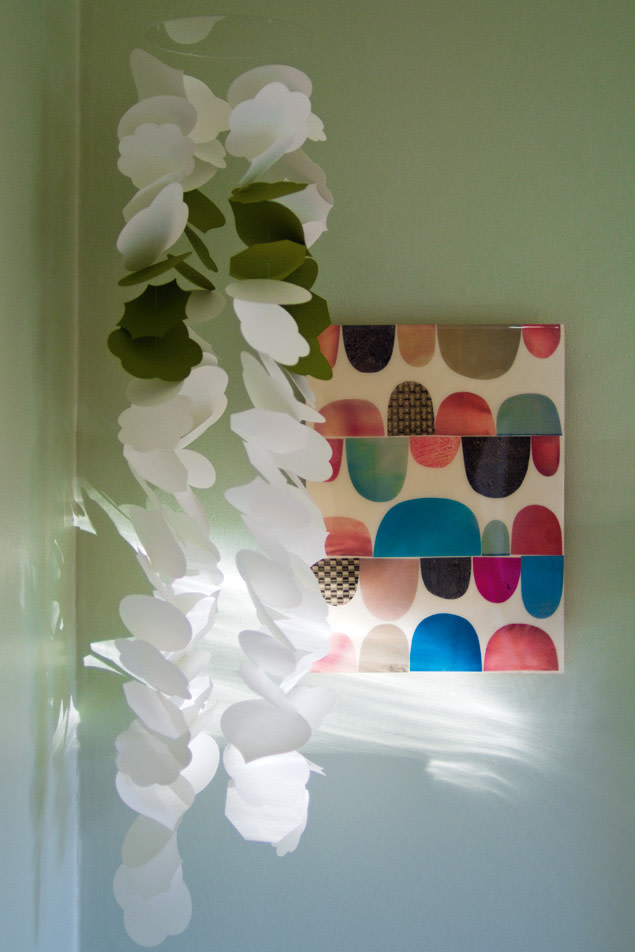
Whimsical accents, such as this collage by Bay Area artist Rex Ray and a paper mobile by homeowner Heather Frazier, bring cheer to the dining room.
Image: Jon Jensen
“This is an old house, but I like a modern, minimalist feeling, and I tried to meld those things,” says Frazier. The self-professed “design junkie” also has a flair for combining timeless basics with effervescent accents, as seen in the dining room, where a serene, marble-topped, Saarinen dining table is offset by a whimsical, curvilinear Le Klint pendant lamp and a playful mobile that Frazier made from paper cutouts and monofilament. (Similar models are available online at her company’s website, FrazierAndWing.com.) Contemporary art adorns their walls, including works by artists whom Hartman represents, such as Portland-based photographer Camille Solyagua. Blown glass vases made by Hartman’s sister settle among Frazier’s displays of antique colored glass found at vintage shops and at the sprawling flea market at Alameda Point in the Bay Area.
The flea market is one of the things Frazier most misses about living in the Bay Area, but otherwise the couple has adapted happily to Portland, a city Hartman describes as “closer to sharing our priorities,” with its focus on livability. And you might say their house, derived as it is from a movement that celebrated the art of beautiful living, shares their priorities as well.
